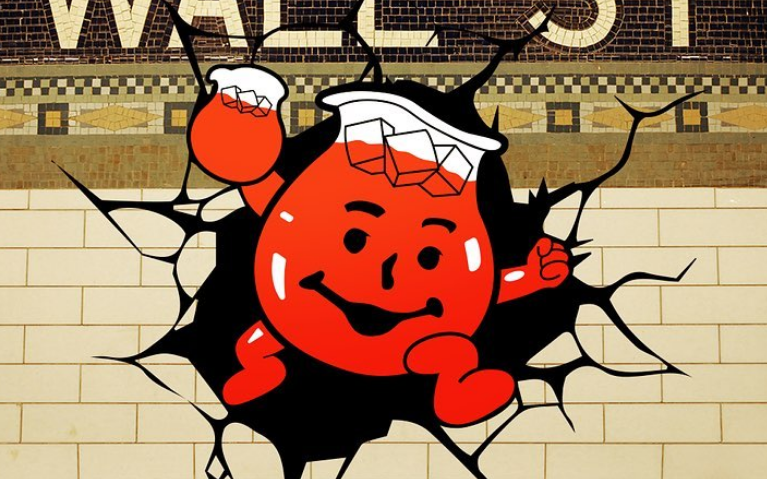We Must Know if Kool-Aid Man's Soul Is in the Jar or the Red Liquid
Updated Feb. 27 2020, 3:04 p.m. ET
Who are we? What defines our existence? Is it the presence of a soul? Are our births a complete accident left entirely up to chance?
These deep human fears lead us to one vital question: Is the Kool Aid Man the jar or the liquid?
I know you're unsarcastically thinking, "Mustafa, you're putting your Master's degree to good use, thank you." And you're welcome, but let's get to it.
Since his introduction into our collective social consciousness in 1974, the Kool-Aid Man has represented a myriad of psychological phenomena, like our deep-rooted fear of a deus ex machina suddenly interrupting our lives and altering them forever.
He's also been a trigger agent of lilapsophobia and erythrophobia, along with the fear that entire generations of children will become afflicted with type-2 diabetes and be entirely fine with that, shrugging their shoulders and accepting it as a mere fact of life as they grasp for more of that red-flavored drink.
But he also represents the heimlich/unheimlich struggle, we, as humans, have battled with since we evolved to a level of consciousness that has us constantly asking ourselves: who are we, really?
Animals, arguably, don't suffer from the same struggles. Gorillas have, for at least 55 million years, been perfectly content with their ape-ness, living more or less the same way they did since they first came into existence. You never see squirrels look enviously at birds, wondering why they can't fly, or cockroaches "giving up" and deciding they want to be loved like a happy quokka, posing for selfies with cyclists.
The members of the animal kingdom, whatever genus/species they belong to, seem more concerned with living: eating, procreating, hunting, escaping, or whatever they do. But human beings are constantly having to figure out how to find purpose and happiness in their lives. Every single beaver loves building dams, but not every person is well acquainted enough with themselves to honestly work and discover just what their purpose in life is.
Which is probably why this harrowing question of just where the Kool-Aid Man's soul lies came about. Let's entertain the old adage that "the eyes are the window to the soul," and that KAM's countenance, his eyebrows, eyes, nose, and vaguely threatening smile, are what embodies his sugary spirit.
Is that face plastered on the jar? Or does the juice inside the jar contain the essence of this mascot/agent of chaos meant to sell the sweet dyed powder we love gulping down so much?
Instagram user @pizzastrike offered up a startling look into this conundrum and asked his followers to theorize as to who the Kool-Aid Man really is. It led to some thought-provoking insights. Some people believe he is a combination of both: Are human beings comprised of just bones and flesh, or blood? No, we are the sum of all our parts, and so, many postulated, is the Kool-Aid Man.

Others pointed to the mascot's previous commercials as part of a canonical argument that he is actually the jar and the juice inside of him is purely ornamental, like earrings or tattoos. If you watch this advertisement below of him showering, it's evident that he is, indeed, just the jar and not the tasty beverage we created as a means of making our responsibility for personal sustenance more entertaining.

While this doesn't answer the greater question as to why the Kool-Aid Man came into existence or how his jar-corporeality was birthed in the first place, at least we can sleep soundly knowing that the sugar water inside of him doesn't contain his essence. On the other hand, this means, sadly, that our quest for understanding the soul will not be satisfied by imbibing the spirit of another.
That answer only lies within ourselves and our pursuit of that great mystery may always elude us, which may very well be the answer, after all. Maybe, like the Kool-Aid Man, we're supposed to find that enthusiasm to do what makes us happy every single day, come hell or high water. Like breaking through the walls of children's homes and shouting with all the deep bass we can muster, "OH YEAH!"

